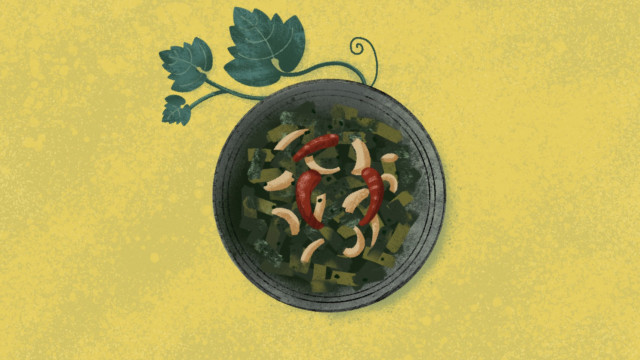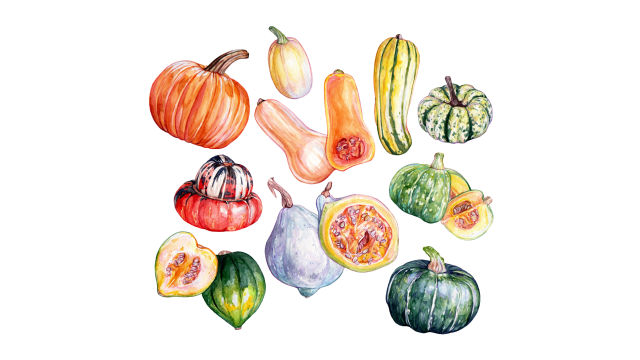Oh My Gourd! A Culinary Epiphany

In subtropical Taiwan, plant nurseries begin stocking their pallets with melon, squash, and gourd seedlings around April and May when the weather starts to transition from warm to mildly hot. And as a wide-eyed gardener with a brand new, sparkling plot of land, I was mesmerized by the selection and coveted it all. I found myself leaving the nurseries with fat bundles of mystery squash seedlings, perhaps a watermelon or two, cucumbers, bitter melon, and what I thought was going to turn into a winter melon.
And in my garden, I’d plant them at random. Some I’d put against trellises, and others just on the ground in hopes they would spread their big, luscious leaves across the bare garden bed, suppress the weeds, and give me a magical surplus of big, round gourds, melons, and other fruit.
Highest Edible Species
I learned the hard way that it’s really not all that easy. Pumpkins, melons, squashes, and gourds all fall under the Cucurbitaceae family, an important plant category that accounts for the highest percentage of species edible by humans. The problem is that as babies they all look extremely similar, with their wide bold leaves and stretched-out tendrils that curl and grasp onto whatever they get their hands on. When the grand leafy parts of the plant hit a critical mass, they begin shooting out flowers. The butterflies and bees get to work, dancing between the male and female flowers until, eventually, the male flowers die off and the successfully pollinated female flowers start growing fruit.
The growth starts off slow and gradual — a small swollen mass that steadily increases in size if the conditions are just right. This is the point where things started to change. Turns out there are a lot of variables at stake.
I watched horrified as my watermelon got to be about the size of a baseball and started to rot. A fat black bruise appeared on its side, presumably because it spent its entire lifecycle on the damp humid ground. I really should have elevated it and put it on a trellis. My cucumbers never even showed; I think I planted them too late in the season. One of the mystery squash plants expanded so much that its leaves and tendrils took up an entire garden bed, but only managed to produce tiny, marble-sized fruit before they fell off and quickly decomposed. That I still haven’t been able to successfully troubleshoot.
Taiwan’s summer is extremely hot, often averaging the mid-90s. The heat weakens the leaves of these gourds, which would otherwise help protect the fruits from sunburn.
The only Cucurbitaceae that really worked for me was what I thought was a winter melon. Its vines had caught onto the frame of the metal hoop that wraps around my plot and grew until a curvy, long gourd appeared. The fact that it was lightly shaded by an adjacent citrus tree is probably what helped it thrive. Delighted, I snapped a picture and posted it on Twitter. An eagle-eyed stranger pointed out that I had actually grown a luffa gourd, not a winter melon. A winter melon is waxy and oblong; a luffa has distinct, vertical ridges that run from top to bottom, and is more reminiscent of an elongated, fat cucumber.
The Plant that Keeps Giving
But there was a problem. Because I thought I had grown a melon, I had let it grow too big. Luffas have to be harvested while they’re still young in order to be edible; they start to become dense and fibrous if they spend too much time on the vine. Some people do this on purpose. An old luffa can be cultivated into a luffa sponge, which is used for bathing or dishwashing.
When I cut into my winter-melon-turned-luffa, I was heartbroken. It had already begun developing a fibrous web and was basically inedible. While an amazing gourd no matter how it’s utilized, I prefer my luffas young with a tender, milky-white center. Throw it in a hot wok and it turns into butter.
Thankfully, my plant kept on giving. Luffa is a gourd native to Southeast Asia that thrives in the subtropics. So while its cousins wilted in the extreme heat, it continued to grow and produce more and more fruit. Within weeks I was able to harvest one at the perfect level of maturity.
A perfect luffa is slightly sweet, and you don’t need much except a pinch of salt. It’s quite versatile. You can throw it in soup or sauté it in a wok. In Shanghai, I had an incredible version served in a shallow broth of fresh soy milk and sprinkled with goji berries. The dish was unexpected, yet beautiful and subtle. The luffa tastes like a mix between a zucchini and a cucumber, and the goji berries add a punchy fragrance that brings it all together.
RECIPE: Luffa with Soy Milk
Key Takeaways
- Gardening offers fresh, seasonal produce.
- Luffa is versatile and nutritious.
- Gourds help in better digestion.





